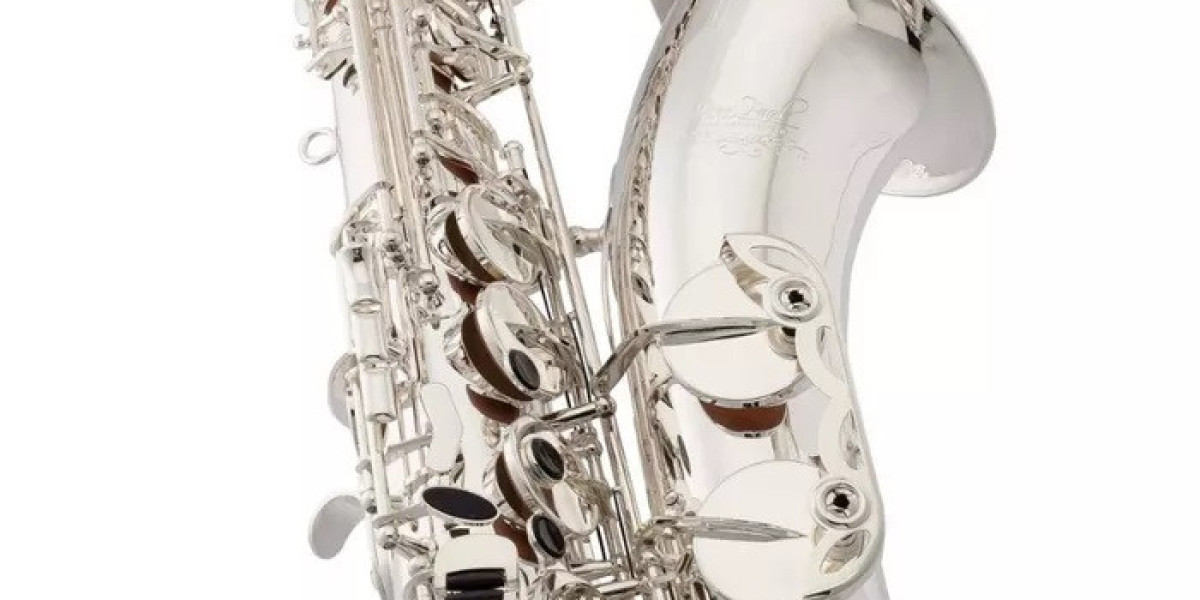The tenor saxophone is one of the most versatile and expressive instruments in the woodwind family. Known for its rich, warm tone and broad dynamic range, it plays a crucial role in genres like jazz, classical, rock, and contemporary music. Understanding how the tenor saxophone works helps both players and enthusiasts appreciate its mechanical complexity and musical capability. In this article, we will dive deep into the acoustics, structure, components, and playing techniques that bring the tenor saxophone to life.
The Design and Structure of the Tenor Saxophone
The tenor saxophone is a transposing instrument pitched in B♭. Its body consists of a conical brass tube with numerous tone holes covered by pads. Though made of brass, it’s classified as a woodwind instrument due to its single-reed mouthpiece. This design allows the saxophone to bridge the gap between brass and woodwind, combining power with expressiveness.
The saxophone has a characteristic curved neck and body, unlike the smaller alto or the larger baritone saxophone. The bell flares out at the bottom, aiding sound projection. Its tubing measures approximately 1.5 meters when uncoiled.
The Main Components of the Tenor Saxophone
Understanding the key components is vital to grasping how the tenor saxophone works:
Mouthpiece: Typically made of ebonite or metal, it holds the reed and shapes the initial sound.
Reed: A thin piece of cane that vibrates when air passes through, producing the fundamental sound.
Ligature: Holds the reed tightly against the mouthpiece.
Neck (Crook): The curved piece that connects the mouthpiece to the body.
Body: Contains the majority of the tone holes and mechanisms.
Bell: Projects the sound outward.
Keys and Pads: Control airflow and change pitch by opening or closing tone holes.
How Sound is Produced in a Tenor Saxophone
Sound in a tenor saxophone begins with air. When the player blows into the mouthpiece, air causes the reed to vibrate against the mouthpiece’s flat surface. This vibration disturbs the air column inside the saxophone’s body, setting up standing waves. The length and shape of the air column, determined by which tone holes are open or closed, determine the pitch.
The tenor saxophone overblows at the octave. That means the second register of notes is exactly one octave above the first, which is achieved by engaging the octave key that redirects air through a second small hole near the neck.
The Role of the Reed and Mouthpiece
The reed is the heart of the saxophone’s sound production. Its thickness and flexibility directly affect tone quality and ease of play. Harder reeds offer more resistance but produce a richer sound, while softer reeds are easier to play but may sound thinner.
The mouthpiece also shapes the sound. A wider tip opening typically yields a brighter tone, while a narrower one results in a darker, mellower sound. Material matters too—metal mouthpieces tend to produce brighter, edgier tones, while ebonite mouthpieces give warmer, rounder sounds.
The Key Mechanism: Engineering Behind the Notes
The key system is a marvel of mechanical engineering. Each key is connected through a network of rods, springs, and levers to pads that seal the tone holes. When a player presses a key, it may open or close several holes simultaneously. Some keys, like the palm keys and pinky keys, operate auxiliary holes for altissimo or lower range notes.
The keys must be adjusted with precision. Poorly regulated keys or leaky pads can severely affect intonation and tone. For example, a leak in the G# key can prevent proper pitch or cause notes to split between octaves.
The Octave Mechanism
The octave key is vital for playing in the second register. It operates a small pad on the neck or the body depending on which note is played. The mechanism intelligently alternates between two small octave vents depending on the fingering, allowing a seamless transition between lower and higher octaves.
Without proper function of the octave key, the instrument would struggle to maintain pitch accuracy in the upper register.
The Role of Air Support and Embouchure
Proper air support is essential. The player must control their diaphragm and breath pressure to maintain a steady air stream. Too little air causes weak, breathy tones, while excessive pressure leads to squeaks or pitch instability.
Embouchure refers to how the mouth and facial muscles shape around the mouthpiece. A balanced embouchure controls the reed’s vibration, stabilizing pitch and tone. Beginners often bite too hard or too little, which interferes with proper sound production.
Fingering System and Range
The tenor saxophone has a fully chromatic range from Ab2 to E5, with altissimo extending higher. The standard fingering system is derived from the Boehm system and is designed for intuitive transitions between notes.
Each hand operates a set of keys:
Left hand: Controls upper stack, palm keys, and octave key.
Right hand: Manages lower stack and pinky keys for low notes.
Advanced techniques like alternate fingerings, trill keys, and half-holing expand the musical possibilities.
Acoustics and Harmonics in the Tenor Saxophone
The tenor saxophone’s conical bore supports a complete harmonic series. Unlike cylindrical-bore instruments like the clarinet, the saxophone can play overtones easily. This design is what allows the saxophone to overblow at the octave rather than at the twelfth.
Players use this harmonic richness to their advantage when playing in the altissimo register, which involves voicing and specific fingerings to activate higher harmonics.
Techniques that Influence How the Saxophone Works
Several advanced techniques showcase the saxophone’s capabilities:
Overtones: Practicing these improves tone and control.
Multiphonics: Producing two or more notes at once.
Growling: Adds a rough texture to the tone, used in rock and blues.
Slap tonguing: A percussive attack created by the tongue.
Altissimo: Extends range beyond written high E, using advanced fingerings and voicing control.
These techniques manipulate the air column and harmonic series in creative ways, showing how versatile the saxophone truly is.
Conclusion
The tenor saxophone is a blend of mechanical precision and acoustic artistry. From the vibrating reed to the finely tuned keys, every part works in harmony to produce its iconic sound. Understanding how the tenor saxophone works enhances a player’s skill, appreciation, and maintenance practices. Whether you’re a beginner or a seasoned performer, this insight will help deepen your connection to this magnificent instrument.






